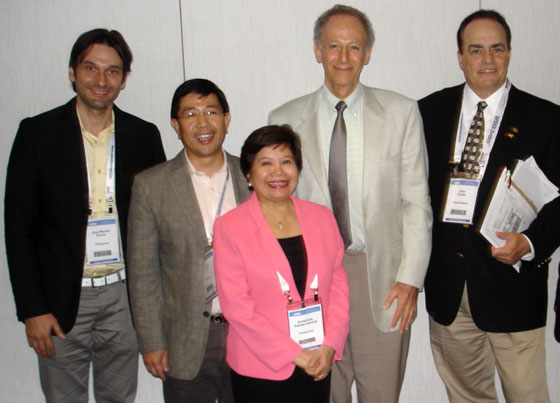On February 5, 2010, the Symposium on Orthodontic Certifying Boards was held in Sydney, Australia during the 7th International Orthodontic Congress of the WFO which started promptly at 3:00PM. All members of the WFO Committee on National and Regional Orthodontic Certifying Boards as well as those who serve in the examination committee in their own countries were invited to attend. The Presidents of the 108 WFO affiliate organizations were also invited.
The objectives of the symposium were:
- To provide information on the advantages of establishing colleges of board certified orthodontists in countries that already have orthodontic certifying boards
- To evaluate and propose additions or changes to the current WFO Guidelines on the Establishment of New and Regional Orthodontic Certifying Boards
- To exchange information and experience among all members of the WFO Committee on National and Regional Orthodontic Certifying Boards including attendees from countries where no certifying board currently exists
- To demonstrate how orthodontic certifying boards elevate the standard of orthodontic care.
Prof. Robert Justus, Chair of the WFO Committee on National and Regional Orthodontic Boards and now WFO President, facilitated the Symposium. He introduced the Chairs of the different Orthodontic Boards around the world, 15 all together.
A half an hour presentation on the American Board of Orthodontics by Dr. Jeryl D. English included how:
- Examiners are selected, trained, calibrated, and synchronized
- Board certification is encouraged through the process of the initial certification of residents and recent graduates and the Gateway Program
- The examination has been designed to be completely objective through the use of the objective grading system, discrepancy index, and case management form.
Another half an hour presentation by Dr. John W. Carter of the College of Diplomates of the American Board of Orthodontics (CDABO) followed. The presentation gave specific examples of how CDABO helps the ABO by:
- Giving preparatory courses to potential candidates
- Showing the methods currently used to educate residents, faculty, and orthodontists about the board certification process
- Explaining the training that CDABO members receive to become examiners and thus aid the ABO directors in the actual clinical examination of candidates
- Encouraging board certification and providing continuing education at its annual meeting.
After the two presentations, all the participants were divided into group sessions. Each group was assigned a question or topic to be discussed by the group and to arrive at a consensus. The questions/topics assigned were:
- Changes to the current WFO Guidelines on Certifying Boards
- How to make the public aware of the importance of receiving treatment by a board certified orthodontist
- The advantage of establishing a College of Diplomates in countries where they do not exist
- The methodology of training, selecting, calibrating, and synchronizing examiners
- Methods to encourage orthodontists to become boarded
- Presentation of statistics regarding the number of board certified orthodontists in each country. In our case, we have only 16 board certified Orthodontists out of 130 Orthodontists.
The question assigned to our group which included the Japanese participants was: “What are the advantages of establishing a College of Diplomates?” After the group sessions, the leader of each group was called to report or summarize what his group came up with.
The idea of this exercise was to disseminate information learned from this symposium and adapt whatever is applicable in our own country. The symposium ended at about 5PM.
Ermelinda Sabater-Galang, DMD, MS
PBO Chair2008-2010





 Views Today : 375
Views Today : 375 Total views : 6795116
Total views : 6795116